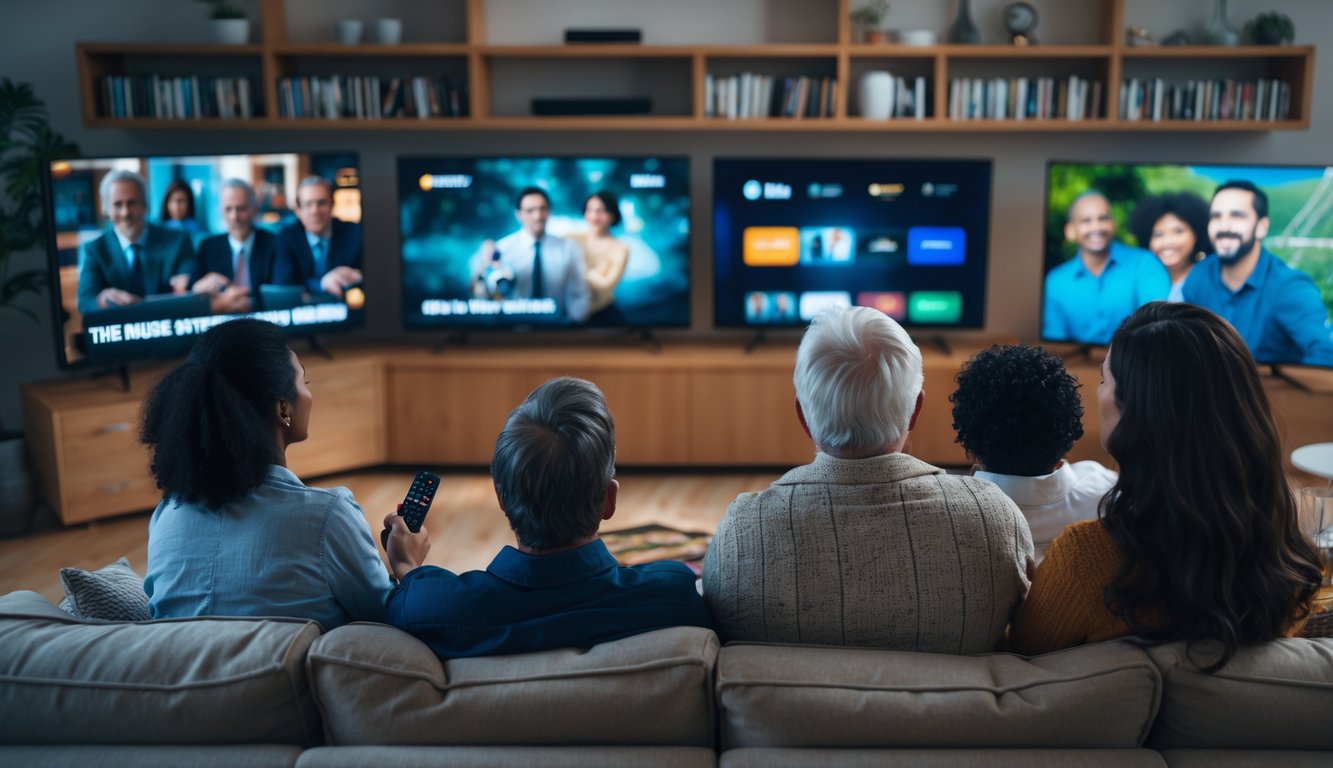
Innovations in Content Format
Alright, but the thing that really gets under my skin? TV keeps throwing these wild experiments at us—choose-your-own-ending specials, live chat overlays, “hybrid” content that somehow ropes in both tech geeks and my aunt who only watches reruns from the ‘70s. Streaming execs love to brag about reshaping content formats, but let’s be honest: half these features disappear before I even figure out how to use them. Open an app, and it’s beta-testing something new—next week, it’s gone.
You’ve got the usual suspects—startups with too much VC money or old-school networks trying to stay hip—messing with vertical video, 8-minute “episodes” that feel like TikTok rejects, and silent drama vignettes (who asked for that?). Interactive TV? Not everyone’s buying it, but showrunners keep saying “completion rates” are the only thing that matters now. Forrester’s analysts even said, “User data, not creative vision, sets the rules.” Not like I’m quitting TV over it. I’ll keep watching, even if my next recommendation is totally random and has nothing to do with what I just finished.
Audience Demographics and Representation
Let’s be real: people love to wave around demographic charts like it proves anything. Who’s actually watching, though? Age, background, nitpicky debates about “authenticity”—it matters more than anyone wants to admit. And representation? Still a mess. Scroll through live tweets and it’s the same tired faces, over and over.
Diverse Storytelling and Authentic Representation
I’m so over producers patting themselves on the back for “representation” when all they do is throw in one vaguely diverse side character with zero backstory. There’s this 2025 DataReportal study saying viewers 55-64 watch way more TV than 16-24 year-olds, but it’s the younger crowd grilling studios about why every character’s a doctor or lawyer. Where are the bubble tea shop workers? The double standard is just… obvious. Corporate boards talk about “impact,” but then they approve the same old genre shows with a slightly different cast and call it progress.
When a show actually tells a real story—race, gender, class, all mixed up and messy—viewers don’t just watch, they binge. I still remember this black-and-white drama about a pop singer that everyone said would flop, but it blew up everywhere. Or that time a Filipino grandma was a main character and suddenly Filipino snacks trended on TikTok. If execs still think “diverse storytelling” means shuffling the cast, I don’t know what to tell them. Maybe they’ll buy a bridge from me next.
Appealing to Niche Audiences and Emerging Talent
So, my cousin’s indie horror short got picked up because some algorithm decided her audience was “insomniac millennials who cook at midnight.” I’m not making that up. Niche targeting is everywhere. Platforms throw money at micro-genres no one cared about five years ago. Suddenly, chess grandmasters and vegan motorcycle repair shops are market movers. Mainstream networks scramble to catch up, but honestly, by the time they do, the trend’s already moved on. Forget focus groups—now it’s about converting Discord servers and TikTok subcultures into real viewers.
I keep seeing it: new talent, people from YouTube or web comics, get picked up because their niche fans are diehards. Not just for show, either. CrowdReactMedia’s 2025 report says media engagement shifts are about actual “conversion,” not vanity stats. These micro-communities? They decide who gets renewed. Ad teams chase the conversion rate, turning weird niche content into cult hits. Sometimes it’s genius, sometimes it’s just dumb luck. Ignore the power of tiny, obsessed audiences and you’ll be irrelevant before you know it.
Changing Metrics and Measuring Success
Nobody warned me how weird TV viewership tracking would get. The old numbers game? Full of holes. Now my inbox is stuffed with pitch decks bragging about “sentiment analysis” and “real-time engagement,” but my own recommendations are still way off. Measuring success now feels about as reliable as a remote that only works if you smack it.
Evolution of Ratings and Viewership Trends
Remember when Nielsen was king? Flip the channel and somewhere, some family’s “representative” viewing counted for the whole country. It’s wild that’s still a thing, even though streaming platforms rewrote all the rules. I read that 80 million Netflix views are treated like ticket sales. Who decided that? Is my background binge really the same as my “must-see” night? Netflix’s own reporting claims it is, but I don’t buy it.
Genres swing all over—cop dramas one year, dating chaos the next—because of this metrics mess as much as anything creative. Budgets follow whatever last year’s numbers say, even if half those “views” are just autoplay leftovers from someone’s dog video marathon. You’d think someone would notice, but everyone’s too busy hyping the next “trend” to care that TV viewership basically means nothing now.
Tracking Viewer and Audience Engagement
Talent agents? Most of them don’t even bother with demographic reports anymore. Not because they’re lazy, but because there’s just too much data: retention, scroll-depth, time-spent, weird “heat maps” showing where people pause or rewind. One exec told me, “Just show me the engagement spikes. That’s all I care about.” Tracking TV engagement metrics means spreadsheets for every little thing: likes, hashtags, rewatch rates for some random character’s dance.
Dirty secret? Most of this data is only “insightful” in theory. Management consultants love it, but ask a showrunner to pivot mid-season because of TikTok shares and you get chaos. Why even measure total audience if everyone’s just skimming for spoilers? Still, advertisers are obsessed with quantifying every second, so the circus keeps going. Tables, heatmaps, minute-by-minute drop-offs—it’s all a blur, but nobody’s quitting.



